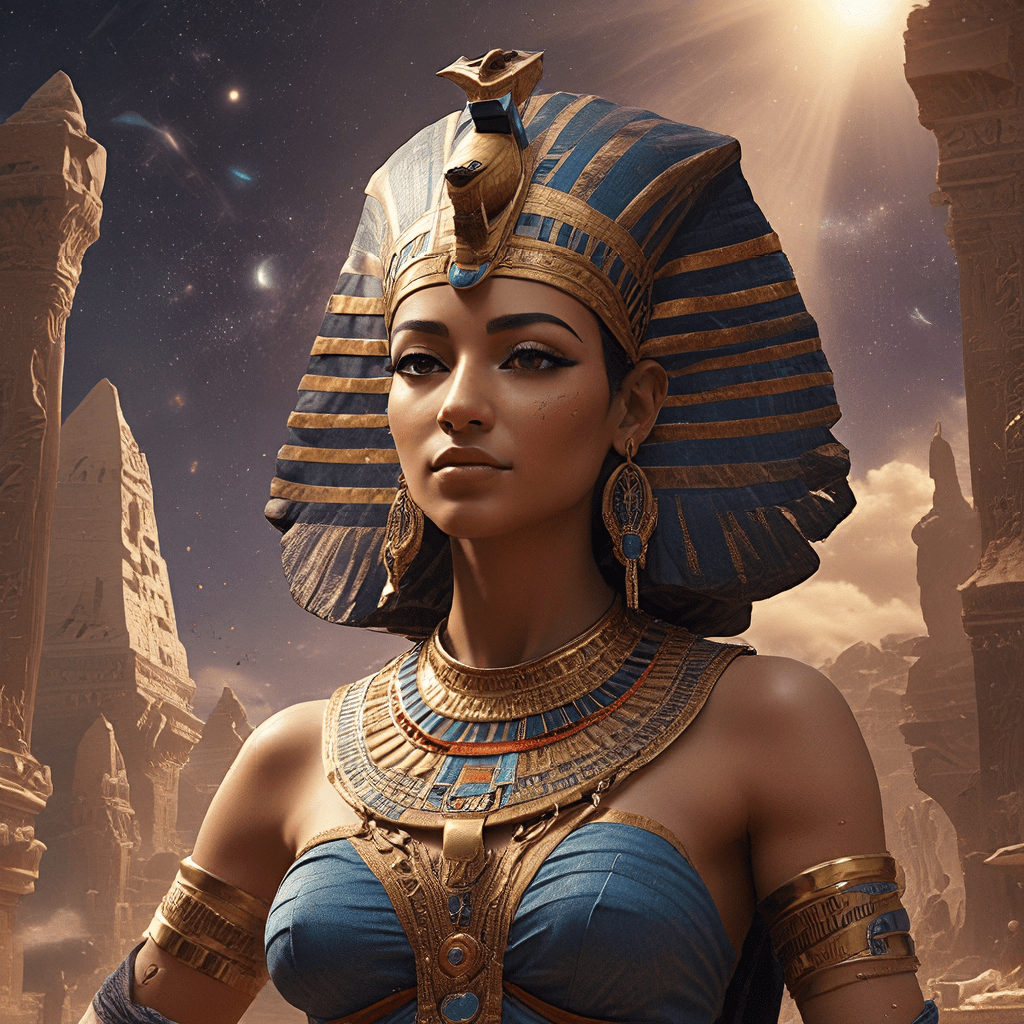The Celestial Symphony: The Music of the Egyptian Cosmos
1. Introduction: The Cosmic Dance
Ancient Egyptians saw the universe as a vibrant and interconnected place, a cosmic dance of celestial bodies governed by divine forces. Music was not simply entertainment; it was a fundamental element in the creation and maintenance of order within this cosmos. They believed that the movements of stars, planets, and the sun created a symphony of sound, a divine music that resonated throughout existence.
Just as a conductor guides an orchestra, the Egyptian deities directed this celestial symphony. Each celestial body, from the sun to the moon, played a unique role in the cosmic orchestra, their movements and interactions creating a harmonious melody that sustained the universe.
2. The Divine Musicians: Gods and Goddesses of the Cosmos
At the heart of this celestial orchestra was Ra, the Sun God. He was the conductor, his daily journey across the sky bringing light and life to the world. His chariot, drawn by celestial beings, represented the rhythm of the cosmos, the constant cycle of day and night.
Geb, the Earth God, was the resonant drum, his solid form providing a foundation for the celestial symphony. Nut, the Sky Goddess, stretched across the heavens like an echoing harp, her vast expanse holding the stars and planets. Other deities also played their roles in this cosmic orchestra: Thoth, the god of wisdom and magic, with his celestial lyre, and Hathor, the goddess of love and music, with her celestial tambourine.
3. The Celestial Instruments: Stars, Planets, and the Sun
The stars were the notes of the celestial melody, forming constellations that told stories about the gods and the universe. Each constellation had its own unique melody, their combined sounds creating a vast and intricate cosmic tapestry. The planets, like celestial percussion instruments, played their roles in this symphony, their movements creating a rhythmic pulse that influenced the lives of people on Earth.
The sun, the radiant source of cosmic harmony, acted as the celestial conductor, guiding the celestial orchestra and ensuring that the music of the universe continued to flow. The Egyptians believed that the sun’s journey across the sky created a powerful and uplifting sound that resonated throughout the cosmos.
4. The Music of Creation: The Divine Song
In the Egyptian creation myth, music played a crucial role. It was the divine song, the harmonious interplay of celestial bodies, that brought the universe into existence. The rhythmic beating of Geb’s drum, the echoing resonance of Nut’s harp, and the radiant melody of Ra’s chariot combined to create a symphony that gave birth to life, light, and order in the cosmos.
This cosmic symphony was not only the foundation of creation; it also served as the foundation of existence. The harmonious interplay of celestial bodies ensured the balance and order of the universe, a cosmic dance that continued for all eternity.
5. The Music of the Afterlife: The Journey of the Soul
Music played a vital role in Egyptian funerary rituals. After death, the soul embarked on a journey through the underworld, guided by the celestial orchestra. The gods and goddesses of the afterlife, including Osiris, the god of the underworld, and Anubis, the god of mummification, used music to guide the deceased through the perilous trials of the underworld.
The music of the underworld itself was a powerful force, influencing the soul’s journey. It could soothe or terrify, aid or hinder, depending on the soul’s actions in life. The harmonious sounds of the celestial orchestra helped the soul navigate the challenges of the afterlife, leading it towards eternal peace and rebirth.
6. The Music of the Nile: The Lifeblood of Egypt
The Nile River, the lifeblood of ancient Egypt, was seen as a celestial river, connected to the cosmic waters. The annual flooding of the Nile, which brought fertility and abundance to the land, was viewed as a musical rhythm, a cosmic cycle of life, death, and rebirth. The Egyptians celebrated the Nile’s bounty with music and dance, acknowledging the river’s connection to the celestial orchestra.
Music played a vital role in agricultural rituals, reflecting the deep connection between the Nile, the cosmos, and the cycle of life. The Egyptians believed that by aligning their actions with the music of the universe, they could ensure the continued fertility and abundance of their land.
7. The Music of the Temple: Ritual and Ceremony
Music was an essential component of temple rituals, a way to connect with the divine and seek the favor of the gods. Hymns, chants, and dances were performed in temples, accompanied by instruments like harps, flutes, and drums. These musical offerings were believed to please the gods, ensuring their blessings upon the land and its people.
The temple was a place where the music of the cosmos was brought down to Earth, allowing humans to connect with the divine and participate in the celestial symphony. Through music, the Egyptians sought to harmonize their lives with the rhythms of the universe.
8. The Music of the People: Everyday Life and Entertainment
Music was not just for the gods and the rituals: it was woven into the fabric of everyday Egyptian life. People used music for celebrations, entertainment, and even work. Instrumental music, vocal performances, and dance were common forms of entertainment, bringing joy and community spirit to Egyptian society.
The Egyptians believed that music could evoke emotions, heal the sick, and even influence the course of events. It was a powerful force that could connect people to their gods, their ancestors, and each other.




